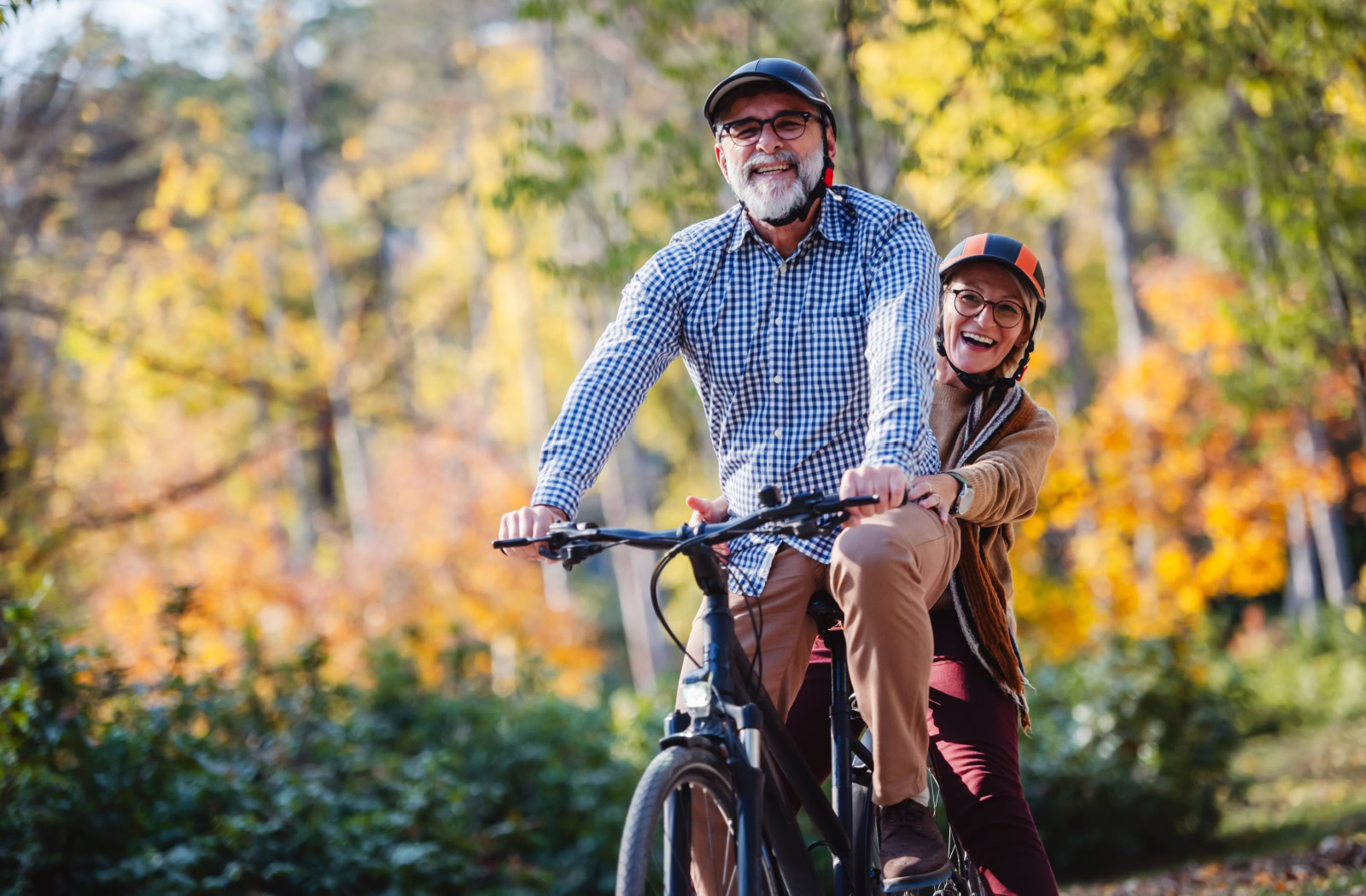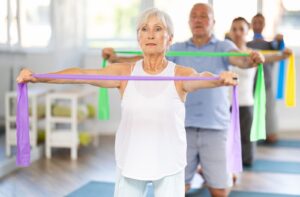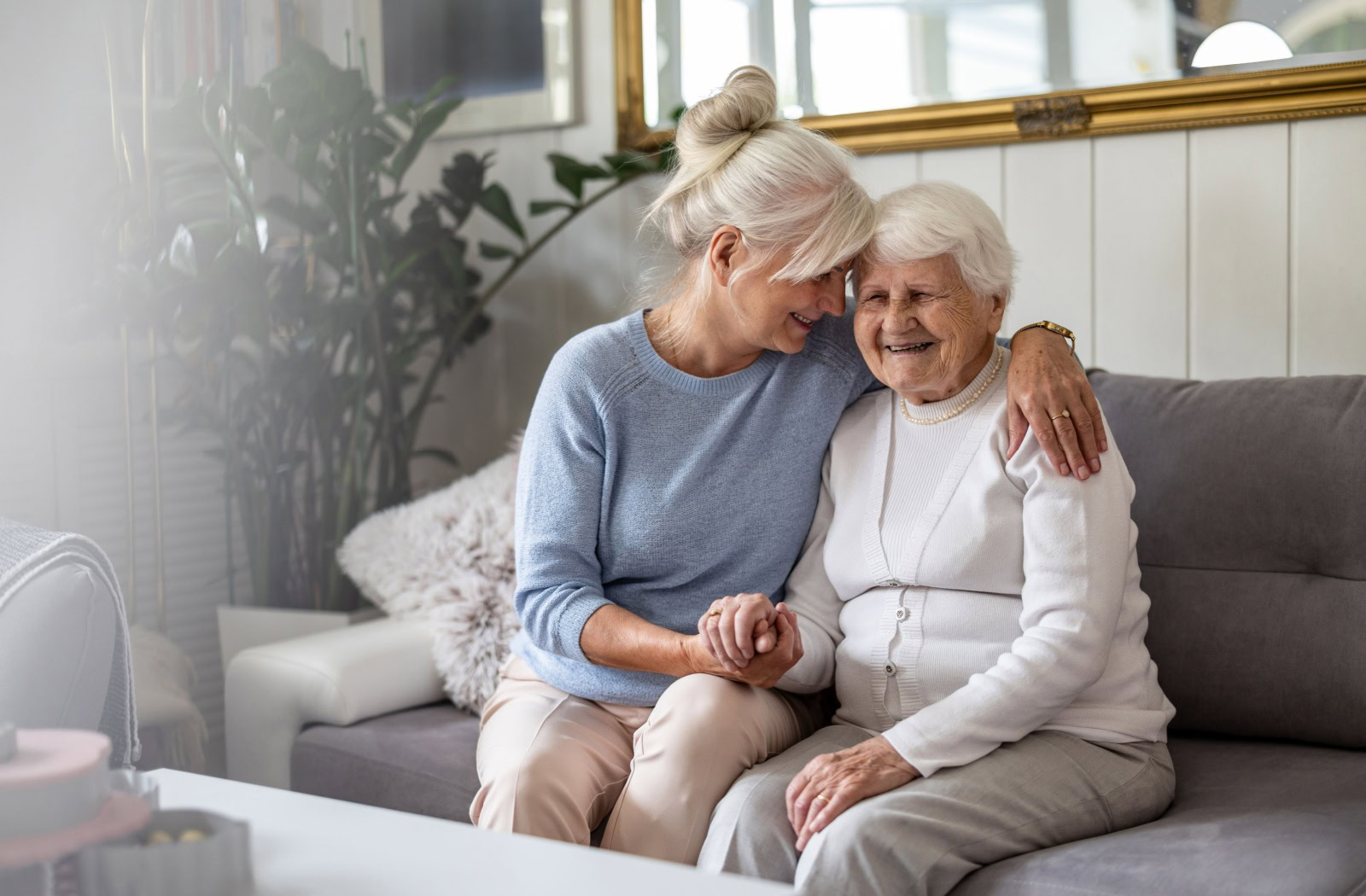The Science Behind Fitness & Longevity for Seniors
- Posted on
- By Mira Vie Senior Living

Staying active is essential at every stage of life, but as we age, the impact of regular physical activity becomes even more important. Fitness is more than just maintaining mobility; it’s your or your loved one’s gateway to prolonged vitality and improved quality of life. For seniors, maintaining physical fitness is the key to living longer, healthier, and more fulfilling years.
It’s never too late to get active! Senior living communities inspire their residents to focus on fitness at the levels they can achieve. Every little bit helps.
The Science of Exercise & Aging
Getting enough exercise impacts all facets of aging. Here are some of the benefits of staying active while aging:
Cardiovascular Health
Exercise directly benefits the health of the heart and circulatory system. Engaging in regular cardiovascular activity improves blood flow, reduces blood pressure, and strengthens the heart muscle itself. The American Heart Association found that aerobic exercise can reduce the risk of heart disease by improving cardiovascular efficiency and reducing inflammation. For seniors, even moderate walking or light aerobics can make a big difference in promoting heart health.
Muscular Strength & Endurance
We naturally lose muscle mass as we age, a process called sarcopenia. However, strength training can mitigate this loss and help maintain independence.Studies show resistance training increases muscle strength and improves daily functional abilities while reducing the risk of falls. Exercises such as light weightlifting or resistance band workouts are especially beneficial for preserving muscular endurance, helping many seniors remain active and self-sufficient.
Bone Density & Joint Health
Regular physical activity is essential for maintaining bone density and joint health as we grow older. Weight-bearing exercises like walking and light stair climbing help slow bone mineral loss and reduce the risk of fractures caused by osteoporosis. Physical activity also supports joint health by increasing lubrication within the joints and maintaining their range of motion despite the onset of arthritis. For seniors, this means stronger bones and the confidence to stay mobile.
Types of Exercises Suitable for Seniors
Not every exercise is suitable for every person. Seniors in particular need to be careful not to push themselves and only do exercises they’re comfortable with. Here are some examples:
Low-Impact Aerobics
Walking, swimming, and cycling are excellent options for seniors. These exercises are easy on joints while effectively improving cardiovascular health. To get started, set manageable goals such as a daily 20–30-minute walk in the park or joining a local pool exercise class.
Strength Training
Using light weights or resistance bands can be remarkably effective for seniors looking to preserve muscle strength. Focus on exercises that target major muscle groups, such as seated leg lifts or bicep curls. Safety is key—use proper form and incorporate breaks to avoid injury. If needed, consult an expert or watch guided tutorials for clear instructions on technique.
Flexibility & Balance Exercises
Yoga and Tai Chi have proven benefits for improving balance, flexibility, and mental focus. These practices enhance coordination, reducing the risk of falls and promoting relaxation. Many senior-specific yoga or Tai Chi classes are designed with gentle routines that cater to varying fitness levels.
Creating a Safe Exercise Routine
Check in with a healthcare provider before starting any new exercise program. Medical clearance helps the routine align with any existing health conditions and avoids unnecessary strain. Creating a customized plan tailored to individual fitness levels safeguards health while paving the way for progress.
When beginning an exercise routine, less is more. Start slowly and gradually build intensity so the body can adapt naturally without overexertion. Pay attention to how your body responds and rest as needed to avoid exhaustion or injury.
And, of course, staying hydrated is equally as important as the exercise itself! Seniors should drink plenty of water before, during, and after activity. Nutrition also plays a key role. A healthy diet should be rich in nutrients like calcium, vitamin D, and protein to support physical activity and recovery.

Overcoming Barriers to Exercise
Physical limitations may feel discouraging, but there are adaptive exercises and assistive devices that provide great alternatives. For example, chair-based exercises or water aerobics are excellent low-impact options. Working with a licensed physical therapist can also provide guidance on movements that accommodate specific limitations.
If lack of motivation is the problem, start by setting small, realistic goals to keep exercise exciting and rewarding. Whether it’s walking an extra five minutes each day or mastering a balance pose in yoga, achievable milestones provide motivation to keep moving forward. Exercising with a workout buddy or joining a group class also adds a social aspect, making workouts more enjoyable.
It’s natural to worry about injuries, whether for yourself or for a loved one starting a new exercise regimen. Safety always comes first. Practicing proper form during exercises (especially strength training), starting with low-impact activities, and using modifications when needed create a safe and productive workout environment.
The Role of Senior Living Communities
Senior living communities often provide incredible resources that support fitness and well-being. Many communities offer group exercise classes, giving residents the opportunity to stay active while socializing. Access to fitness equipment and regular wellness events creates a supportive and safe environment for staying active.
Fitness can be more than simply a routine. It can be shared moments among like-minded people with common goals.
Moving Toward a Healthier Future
Living an active lifestyle is one of the best gifts seniors can give to themselves and their families. Small, regular steps toward improved fitness reap long-term benefits, helping seniors maintain independence, prevent health issues, and enjoy a higher quality of life.
Our Mira Vie Senior Living team is passionate about helping our residents stay active and engaged. We offer dynamic group classes, expert support, and plenty of opportunities to connect. Book a tour with us today and discover how fun staying active can be!
Related Articles

10 Early Signs & Symptoms of Dementia: What to Look Out for in Your Loved One
Key Takeaways Occasional forgetfulness is normal, but consistent changes that disrupt daily life may signal